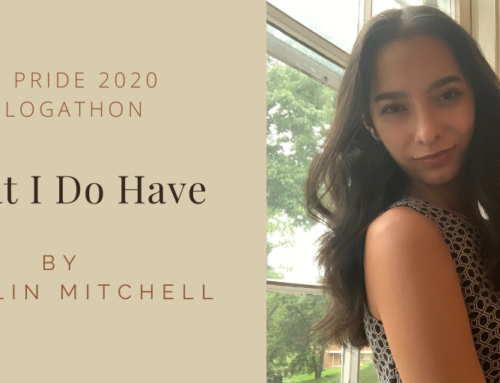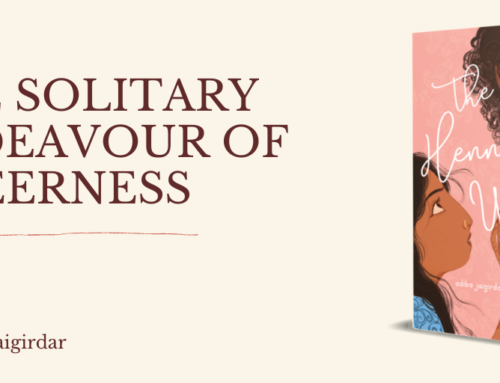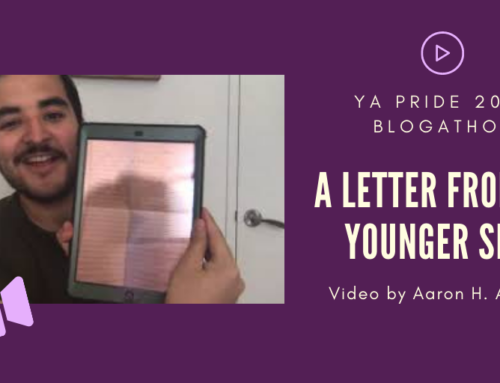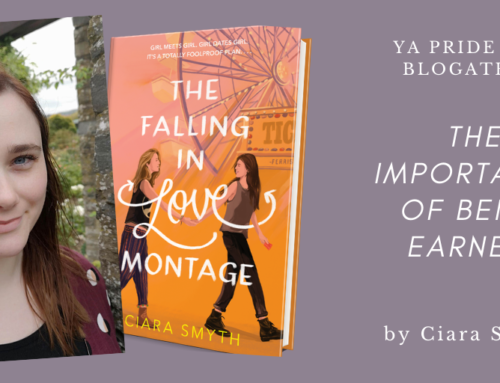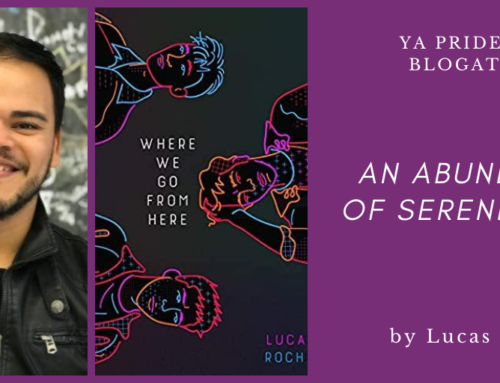Bisexual Awareness Week Series Day #2 – Previous Posts: Introduction — Duality, YA, and Crumpled Stickers
by Angélique Gravely
I didn’t start actively reading LGBTQ+ YA until I was almost a college graduate. By that time, I had more or less accepted my bisexual attractions and my desire to be a YA writer so I dove into LGBTQ+ YA in search of inspiration for the queer stories I now felt drawn to write and, in all honesty, in search of reflections of parts of myself and my story I hadn’t been able to acknowledge as a teen. While I did find some inspiration and some pieces of my teenage self in the YA I read, what I found more often was the absence of major pieces of my story.
Where were the Black church kids in LGBTQ+ YA? Where were the Black girls who went to Christian schools and loved God and fell for boys but also fell for girls? Where were the Black Christian kids trying to make sense of their sexuality while surrounded by white Christians who could only half understand their sense of conflict? Where were the kids wondering if Black church had space for bisexuality or if they would be excommunicated from both Christianity and the Black community for their attractions? Where was the intersectionality that had made coming out feel so convoluted to me?
As a bisexual writer who had just started coming out, I was already discouraged by the lack of easy-to-find bi+ representation in YA, but seeing how little of that representation and LGBTQ+ representation in general included Black religious teens made me feel not only discouraged but also unwelcome. Maybe, the types of characters and plots that I wanted to write weren’t wanted in YA. Maybe, my story and stories like mine weren’t wanted.
My dive into LGBTQ+ YA seemed to suggest that if I wanted to write bisexual characters and be published, my characters should more often than not be white, and if they weren’t white, they had to be non-religious. If I wanted to write queer Christian characters, they should also be white, preferably evangelical though possibly Catholic, and also preferably gay not bi. And if I wanted to write Black teenage characters, whether religious or LGBTQ+, they had to fit the stereotypical media mold of Black adolescence rather than reflect parts of my adolescent experiences as a suburban Black bisexual girl who wrestled with her multi-gender attractions while attending predominantly white fundamentalist Christian schools and going to conservative, lightly charismatic Black churches.
As discouraging as these unspoken messages about who is allowed to exist in YA were and are to me as a writer, they can be downright harmful to bi teenagers looking to find themselves in the stories they read. The lack of intersectional bisexual characters in YA contributed to my feeling that I was an anomaly who should be ashamed of experiencing multi-gender attractions because bisexual was a label for people who didn’t look like me or experience the world the way I did. Based on what I read as a teenager, bisexual Black Christians didn’t exist. It was even debatable whether or not any bisexual people really existed. If I was a teenager reading YA today, while I might be more inclined to believe that bisexual people exist, I still would probably not believe that Black bisexual Christians do. Because as much progress as we have made as far as bi representation since I was a teenager, we still have a long way to go.
That’s why my hope is that as we push for more bi+ representation in YA, we not only demand accurate representation but also nuanced representation. I know my experiences as a Black bisexual Christian who attended Christian schools and went to church willingly for most of her adolescence are very unique but I also know I’m not the only bisexual person in the world who has lived parts of that nuanced experience. I know there are black bi teens growing up in churches all over the country. I know there are bi+ teens attending Christian schools who are determined to keep their faith despite their multi-gender attractions but don’t know how they’re going to do it because they haven’t seen it done in fiction or reality. I know there are black bi teens in predominantly white neighborhoods and schools and religious communities who are struggling to express the tension they feel between their faith and race and sexuality. And they deserve to see themselves in YA, too.
I look forward to a day when it’s easy to find Black bi Christian characters in YA. I also look forward to the day when Black bi characters of other faiths are more widely represented in YA because I want all Black religious/spiritual bi teenagers to be able to find themselves in YA the way I still hope to find my teenage self someday.
—
 Angélique Gravely is a Philly-based bisexual activist & writer trying to come to terms with all of the labels she’s taken on and find the energy to finish all the YA stories she’s started. You can find her reflections on her intersectional experiences and observations on her blog.
Angélique Gravely is a Philly-based bisexual activist & writer trying to come to terms with all of the labels she’s taken on and find the energy to finish all the YA stories she’s started. You can find her reflections on her intersectional experiences and observations on her blog.
